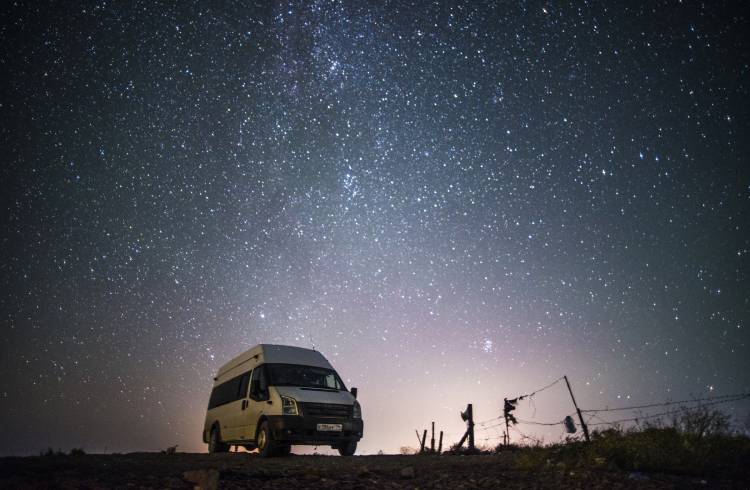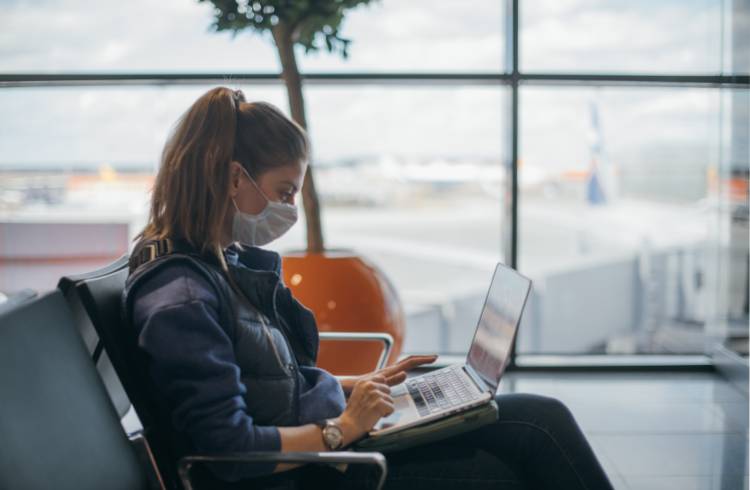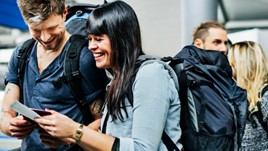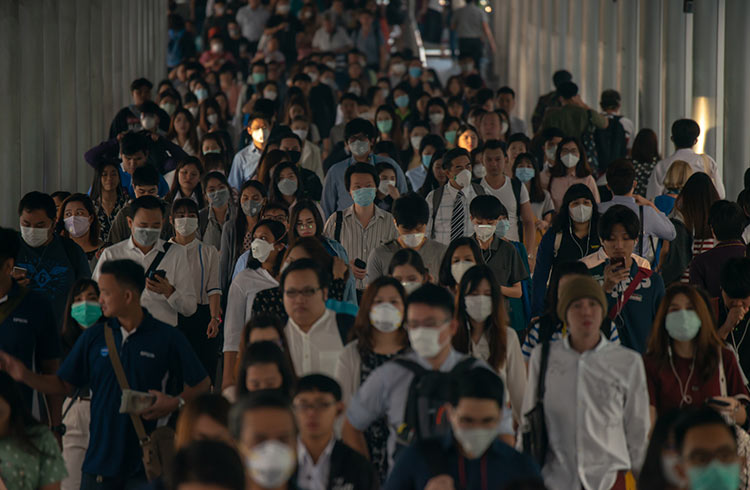How to Travel Safely During the COVID-19 Pandemic
What can travelers do to lower their risk of contracting coronavirus? Check out our safety tips for flying, choosing a hotel or destination, low-risk activities, and how to limit the spread of COVID-19.
 Photo © Getty Images/Orbon Alija
Photo © Getty Images/Orbon Alija
While COVID-19 cases continue to rise and fall around the world, many countries have opened their borders to travelers.
A number of countries are requiring proof of a negative COVID-19 test before travelers depart their own country or upon arrival. Those who test positive on arrival may be required to quarantine (and some countries require all travelers to undergo a period of quarantine, whether or not they provide a negative test result).
Despite these precautions, COVID-19 has not gone away – it remains a serious risk throughout the world. In recent months, new surges in cases and new variants of the virus have caused some nations to tighten their entry requirements. Other countries and regions, thinking they're over the worst, have lowered restrictions, only to see cases rise again.
But the desire to travel hasn't gone away, either. COVID-19 vaccines are rolling out in the US and elsewhere, causing a surge in travel bookings. Some countries are allowing proof of vaccination for entry, rather than a negative COVID-19 test. On 2 June the EU Digital COVID Certificate went live – a single system for securely verifying EU citizens’ COVID-19 status, whether vaccination, a recent negative test, or proof of recovery from the virus.
Yet it will still be several months before vaccines are available to everyone, and even longer before large proportions of the population can be considered immune.
If you do choose to travel in the meantime, how can you do so safely?
- Check your government travel advisory
- Look for destinations, hotels, and operators that are following COVID-19 safety guidelines
- Seek out countries where COVID-19 case numbers are low
- Is it safe to fly during the coronavirus outbreak?
- Safe travel tips during COVID-19
Check your government travel advisory
Before you start planning a trip, check the status of your government travel advisory, and follow its advice.
Keep in mind – even if the status of your destination is “safe to travel”, the advice may change at very short notice, putting you and your safety at risk.
Your government may have their hands tied when it comes to repatriating you and other stranded travelers.
And depending on where you’re returning from, your government may require you to quarantine on arrival – possibly at a state-run accommodation facility, and maybe at your own expense.
If you cannot run the risk of extra costs or loss of work associated with quarantining, you should consider traveling domestically instead of overseas for now.
Consider all of these factors in order to make a good judgement call.

Look for destinations, hotels, and operators that are following COVID-19 safety guidelines
Tourism is vital to the economies of many countries, and they are eager to welcome visitors again. But they don’t want to do so at the risk of creating a spike in local cases. They also know many travelers are leery of travel in the age of COVID-19.
In response, some countries such as Portugal, Abu Dhabi, and Singapore have created certification programs that enforce certain standards of hygiene for hotels, public-facing businesses, and attractions.
Other, more global initiatives have also been cropping up. The World Travel and Tourism Council has launched its Safe Travels program that sets protocols for 11 industries, including hospitality, aviation, and tour operators. Companies and destinations can apply for a Safe Travels stamp once the health and hygiene protocols have been implemented. The protocols will be updated as new information about COVID-19 becomes available.
The Adventure Travel and Trade Association has put together similar protocols for the adventure travel industry. Currently, there is a general set of guidelines for these activities: trekking, cycling, rafting, wildife safaris, culinary experiences, small vessel cruising, skiing and snowboarding, small lodge stays, and cultural tours. Operators who are following the guidelines can request a badge for their website.
Note: both the stamp and the badge are based on self-assessment and are not certifications. In using them, the company or destination is confirming ongoing complaince with the protocols. However, travelers should still look into what steps are being taken to protect guests.
So, one way to help ensure that your activities and accommodations are COVID-19 safe is to look for destinations or operators that are participating in these programs, or ask them what protocols they are following before you book.
This does not mean the risk of catching COVID-19 is totally eliminated. There are many factors in play, some of which are beyond the control of the operator or destination, and some of which depend on the behavior of the travelers themselves.
Seek out destinations where COVID-19 case numbers are low and vaccination rates are high
Some countries or regions have been relatively unscathed by the COVID-19 pandemic, or have seen cases drop as vaccines roll out. If a destination has few cases or hasn’t seen new cases in several weeks, the risk of catching the virus while there is relatively low – provided no travelers are infected with COVID-19 when they arrive.
Wherever you go, it’s safest to stick to wide open spaces, and avoid crowds. Certain activities are also lower risk than others – hiking and camping are considered quite low, visiting a museum (with proper distancing) is moderately low, eating at an indoor restaurant is moderately high, and going to a large music concert, bar, nightclub, amusement park, or sports stadium is high.

Is it safe to fly during the coronavirus outbreak?
According to the US-based Mayo Clinic, viruses don’t tend to spread easily on aircraft because of the way the air is circulated and filtered. Airlines have also implemented more stringent disinfecting measures, and many require passengers to wear masks while on the flight. Some have also started performing temperature checks on passengers prior to boarding. (Check the airline’s website for information on its policies.) And some countries now require that passengers headed to that destination present a recent, negative COVID-19 test result or proof of full vaccination before being allowed to board the flight.
As reassuring as those measures may be, flying does have its risks. Social distancing is nearly impossible on a full flight, even when middle seats are kept vacant. It’s very important to wear a mask and wash your hands well with soap and water before and after eating or drinking, and after using the bathroom.
Airports are a potential source of infection, with thousands of people passing through from all over the world. Most airports have made changes to their security protocols (such as allowing passengers to carry containers of hand sanitizer up to 12 oz., or asking passengers to keep frequently touched personal items inside their carryons when putting them through the security scanner, rather than putting those items in the trays). Passengers are also asked to social distance at security, and while queing up for ticket counters, flights, or deplaning.
Complying with these new restrictions is a good way to stay safe when flying – so is packing your own disinfecting wipes and using them to clean door handles, tray tables, and so on. But now might also be a good time to consider rail travel or a road trip instead.
Read our tips on planning a safe road trip during the pandemic.
Safe travel tips during COVID-19
Preventing the spread of COVID-19 is a shared responsibility. Millions of people are dependent on tourism for their livelihoods – but opening their doors puts them and their fellow citizens at risk. So, if a country welcomes you, the decent thing to do is to comply with its requirements, not present it with a new outbreak.
- The best way to protect yourself against COVID-19 is to get vaccinated. The US-based Centers for Disease Control and Prevention (CDC) recommends against international travel until you're fully vaccinated. Unvaccinated travelers are at much greater risk, especially with new, more contagious versions of the virus, such as Delta and Omicron, now circulating. A negative COVID-19 test before traveling doesn't prevent unvaccinated travelers from contracting and spreading the virus at their destination.
- Don’t assume that because a place has opened up, there is no longer any danger. Some places may have opened due to political and economic pressures, rather than because it has eliminated the virus.
- If you've been fully vaccinated against COVID-19, great! However, there's a chance that a vaccinated person could contract and spread COVID-19 to others (this seems more likely with the Delta and Omicron varients). So it's still very important to mask and social distance when asked to do so. Be respectful of requirements at airports, on transit, and at your destination.
- Reconsider traveling to destinations where the vaccination rate is low, even if you're fully vaccinated. Many jobs in the tourism industry require close contact with travelers, making unvaccinated workers vulnerable and potentially leading to new spikes in infections. The best way to help a destination recover may be to wait until they reach higher levels of local immunity.
- Comply with all local regulations, and know what they are before you travel. If a destination has a mandatory quarantine for arrivals who test positive, don’t turn around and get on a plane home, potentially infecting hundreds more fellow travelers. If a destination has a mandatory quarantine for all arrivals, don't assume a negative test or full vaccination exempts you from that requirement. Non-compliance could mean a fine or even jail time.
- Wear a mask on your flight and wherever requested at your destination. If there are few restrictions at your destination, you should strongly consider wearing a mask in public anyway. Studies have shown that masks help prevent the spread of COVID-19, and the more of us who wear them, the better. According to WebMD, "N95 masks are the most protective masks, followed by a three-ply surgical mask, then a fabric mask." For added protection against more contagious variants, experts recommend wearing two masks (a disposable surgical mask topped by a cloth mask).
- Wash your hands thoroughly and regularly, and avoid touching your face. While washing with soap and water is the most effective way to avoid getting sick, it's also wise to carry hand sanitizer for situations where washing hands may not be possible. Use a sanitizer with at least 60% alcohol (often listed on the label as ethanol, ethyl alcohol, isopropanol, or 2-propanol) and apply it after using the bathroom, before eating or drinking, and after touching any surfaces that other members of the public may have touched.
- Practice social distancing – maintain a distance of six feet or more from people outside your own household/other than your immediate travel companions.
- If you have any symptoms of COVID-19, or think you may have been exposed, do not travel. Period.
Related articles
Simple and flexible travel insurance
You can buy at home or while traveling, and claim online from anywhere in the world. With 150+ adventure activities covered and 24/7 emergency assistance.
Get a quote


No Comments